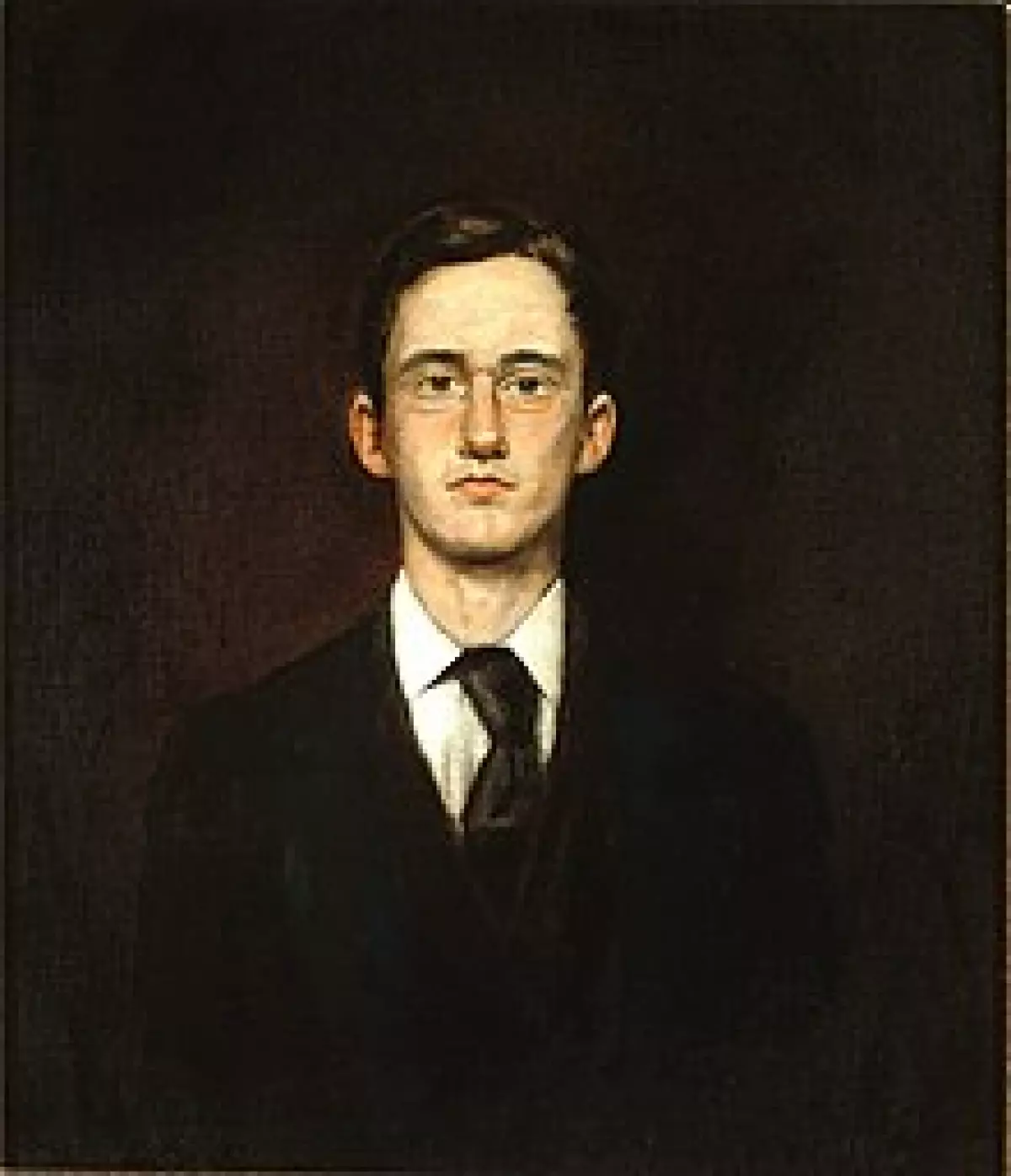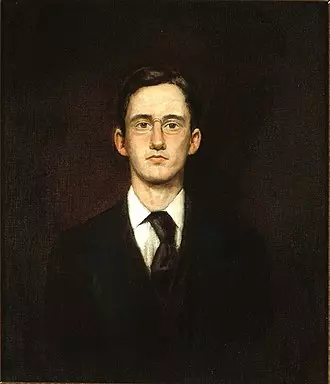 Image: John French Sloan, Self-portrait, 1890.
Image: John French Sloan, Self-portrait, 1890.
The Ashcan School, also known as the Ash Can School, was a remarkable artistic movement that emerged in the late 19th and early 20th centuries in the United States. It was a collective of artists who sought to depict scenes of everyday life in New York, particularly in the city's less affluent neighborhoods.
The Ashcan School included talented individuals such as Robert Henri, George Luks, William Glackens, John Sloan, and Everett Shinn. They were brought together either through their studies under the renowned realist Thomas Anshutz at the Pennsylvania Academy of the Fine Arts or their work as illustrators in Philadelphia newspaper offices. Theresa Bernstein, who also studied at the Philadelphia School of Design for Women, was a notable member of the Ashcan School as well. She co-founded the Society of Independent Artists with Sloan.
Inspired by Walt Whitman's epic poem Leaves of Grass, the Ashcan School is considered a reflection of the political rebellion spirit that characterized the era. The movement sought to present honest and unfiltered portrayals of urban life, challenging the prevailing Genteel Tradition in the visual arts.
Origin and Development
 Image: Ashcan School artists and friends at John French Sloan's Philadelphia Studio, 1898.
Image: Ashcan School artists and friends at John French Sloan's Philadelphia Studio, 1898.
The Ashcan School was not an organized movement with a clear manifesto or common career goals. Some artists were politically engaged, while others remained apolitical. However, they shared a common desire to shed light on the often overlooked aspects of city life that the Genteel Tradition had ignored. Robert Henri, considered the spiritual father of the Ashcan School, believed that art should be akin to journalism, capturing the raw and unpretentious reality of the world. He encouraged his students to embrace the untamed spirit of Walt Whitman's poetry and to fearlessly depict contemporary life in America, just as the French Impressionists had done in France.
The name "Ashcan School" originated from a tongue-in-cheek complaint, published in The Masses, about the prevalence of "pictures of ashcans and girls hitching up their skirts on Horatio Street." Although the artists had been working together for about eight years, this reference amused them, and the name stuck. The Ashcan School was also humorously referred to as "The Apostles of Ugliness."
While the movement did not introduce significant technical innovations, its subject matter set it apart. Ashcan artists often focused on marginalized members of society, portraying street kids, prostitutes, alcoholics, and the gritty realities of urban life. Their work, in many ways, mirrored the documentary photography of Jacob Riis and Lewis W. Hine.
The Ashcan School faced criticism and controversy due to its frank and unsettling portrayal of poverty and urban conditions. However, their 1908 exhibition at New York's Macbeth Gallery was a success, marking a turning point in their recognition and the exposure of their art to a wider audience.
Legacy and Connection to "The Eight"
 Image: The Eight at the Macbeth Galleries exhibition, 1908.
Image: The Eight at the Macbeth Galleries exhibition, 1908.
The Ashcan School is often associated with a group called "The Eight," although only five members of "The Eight" (Henri, Sloan, Glackens, Luks, and Shinn) were Ashcan artists. The remaining three members (Davies, Lawson, and Prendergast) had distinct styles.
In 1908, "The Eight" organized an exhibition at the Macbeth Galleries in New York, protesting the restrictive exhibition policies of the conservative National Academy of Design. The exhibition garnered significant attention and provided a platform for Ashcan art to reach a broader audience. The notoriety and success of the exhibition resulted in increased sales and exhibition opportunities for the Ashcan artists.
However, as modernism gained prominence in the United States, the provocative reputation of the Ashcan School faded. With the rise of Cubism, Fauvism, and Expressionism, artists like Henri and his circle were seen as tame in comparison. The rebellious spirit and innovative approach of the Ashcan School gradually became overshadowed and considered old-fashioned.
In the Gallery
The artwork produced by the Ashcan School captured the essence of daily life in New York City. Their paintings depicted a range of subjects, from street kids and prostitutes to crowded tenements and boisterous theaters. The dark and roughly painted tones of their works stood in contrast to the polished aesthetics of American Impressionism and academic realism.
The Ashcan School, although short-lived, left a lasting impression on the art world. Their unflinching portrayal of urban reality and their commitment to revealing the truth about society's marginalized members set them apart. While their rebellious nature may have faded with time, their legacy as pioneers of American realism remains significant.
Sources
- Brown, Milton. American Painting from the Armory Show to the Depression. Princeton: Princeton University Press, 1955.
- Brooks, Van Wyck. John Sloan: A Painter's Life. New York: Dutton, 1955.
- Doezema, Marianne. George Bellows and Urban America. New Haven: Yale University Press, 1992.
- Glackens, Ira. William Glackens and the Ashcan School: The Emergence of Realism in American Art. New York: Crown, 1957.
- Homer, William Innes. Robert Henri and His Circle. Ithaca: Cornell University Press, 1969.
- Hughes, Robert. American Visions: The Epic Story of Art in America. New York: Knopf, 1997.
- Hunter, Sam. Modern American Painting and Sculpture. New York: Dell, 1959.
- Kennedy, Elizabeth (ed.). The Eight and American Modernisms. Chicago: University of Chicago Press, 2009.
- Loughery, John. John Sloan: Painter and Rebel. New York: Henry Holt, 1997. ISBN 0-8050-5221-6
- Perlman, Bennard (ed.), introduction by Mrs. John Sloan. Revolutionaries of Realism: The Letters of John Sloan and Robert Henri. Princeton: Princeton University Press, 1997.



















